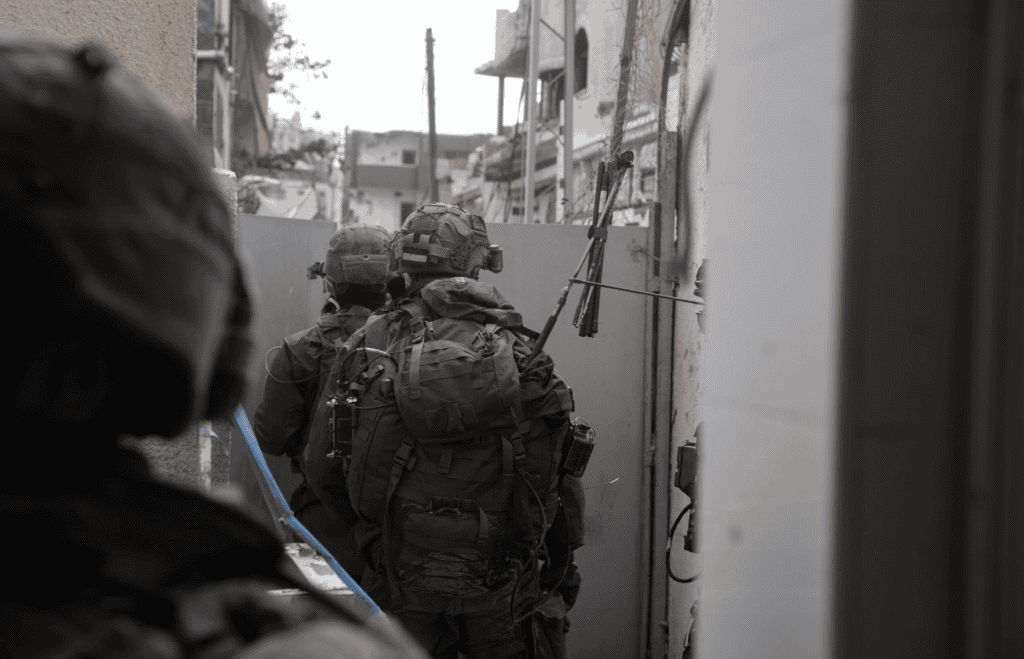
Israeli political leadership says it is beginning to see signs of victory in Gaza. Israeli Prime Minister Benjamin Netanyahu told troops on February 5 that 75% of Hamas battalions have been defeated in Gaza. Given that Hamas had approximately 24 battalions at the onset of the war, this statement implies that 18 of them no longer function. “We are on the path to total victory,” Netanyahu said.
Israeli Defense Minister Yoav Gallant also portrayed Hamas as being on the verge of defeat. “The IDF is operating with great intensity and precision, as ground operations advance and achieve their objectives. Hamas’s battalions have been dismantled and are no longer functioning within their military framework, with over half of Hamas terrorists being either injured or killed.” He said Hamas’ leader in Gaza, Yahya Sinwar, was on the run and having trouble communicating with what remains of Hamas forces.
In addition, Benny Gantz, a political party leader and former Chief of Staff of the IDF who is part of the War Cabinet, also discussed the path to success in Gaza during a press conference on February 6. Describing Israel’s more focused and precise form of fighting, he explained that the IDF is continuing to operate in northern Gaza but could soon reach Rafah, a city still controlled by Hamas on Gaza’s southern border with Egypt. Gantz added that humanitarian aid should reach Gaza without having to go through the hands of Hamas. He hinted at a Gaza without Hamas, a claim that Israeli leaders have made since October. He did not mention who might be in power in the absence of Hamas. This and other key questions surrounding the future in Gaza remain unanswered.
The IDF has encircled Khan Younis and defeated most of the above-ground terrorist elements therein. A Hamas stronghold, it took the IDF more than two months to defeat terrorists here. This due was in part to Israel’s new phase of lower-intensity fighting which consists of fewer airstrikes and more precise maneuvers going neighborhood-to-neighborhood. The IDF says it has eliminated “dozens of terrorists” and detained 80 Gazans between February 5 and 6 in Khan Younis. After Khan Younis, all eyes will be on the one major urban area where the IDF has not yet operated: Rafah.
At the same time however, there are increasing reports about Hamas fighters resurfacing in northern Gaza and policing the area, paying salaries, and other activities related to controlling internal civil affairs. The IDF’s 162nd division, which is responsible for much of northern Gaza and has been fighting there since October 27, returned to Shati near the coast to fight terrorists. The IDF also said “the Nachal Brigade and 401st Brigade combat teams returned to areas where IDF troops had previously operated, in order to act against terrorist targets. The concept of the operation is for the division to conduct a thorough and comprehensive raid in a selected area.” Although the raids netted terrorists, this raises questions about how Hamas has been able to return to these areas.
The commander of the 162nd, Brig. Gen. Itzik Cohen, said on February 5 that “the division is currently in the midst of an operation in Al-Shati, operating against strategic Hamas targets above and below ground. This is an area that initially required three divisions and three days to reach. Now, two combat teams reached the same area within an hour and a half. The forces operating under the division are preventing Hamas from rebuilding its capabilities, killing hundreds of terrorists and arresting dozens of others.” One soldier was killed in fighting in northern Gaza, bringing the total IDF losses since October 7 to 563 soldiers, 226 of which have been killed since ground operations began.
The IDF Chief of Staff spoke at a conference of the Israeli Air Force — the ability to hold such a conference speaks to at least some reduction in tempo after almost four months of war — at which he said the IDF would eventually investigate the failures of October 7. “Why have we not investigated yet? We are in a very intense war, dealing with many fronts, as I previously mentioned, with intense operations also inside the Gaza Strip itself…our intention is very clear. To investigate, and to learn, and to get to the bottom of things, and to leave no stone unturned. We want to learn, understand what worked, understand what didn’t work, what we could have done differently,” he said.







